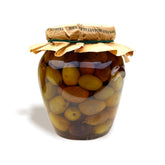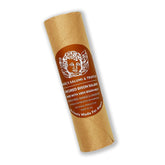A Difference You Can Taste: Why Free-Range and Grass-Fed Meat is Better
In the culinary world, there is a lot of debate surrounding what type of meat is best (Read: Healthiest). You’ll notice labels declaring meat products to be hormone-free, organic, free-range, grass-fed, and more. It can be confusing to determine which type of meat is best, what all of that even means, and what the differences are in terms of both nutrition and flavor.
We’ll explain the differences between organic meat, grass-fed meat, and free-range meat, so you can truly identify what type of meat is best.
It’s been touted for years that consuming red meat can adversely affect your health. However, this is only partially true. The health benefits and the negative effects ultimately come down to the type of meat you are consuming, how often you are consuming it, and how much you are consuming in one serving.
While there are no firm studies showing there are nutritional or health benefits to be gained from eating grass-fed free-range beef. However, this type of meat has a difference you can taste, and is often selected for the fact it does not contain growth hormones or steroids. The ailments often associated with the consumption of red meat, are allegedly due to the ingestion of an excess amount of compounds, such as heme iron and nitrate/nitrite.
So, is grass-fed meat best? Yes, if you are looking for meat that has more nutritional value, a better fat profile, and is less likely to contain antibiotic-resistant, harmful bacteria. Selecting artisan meats will help you to avoid ending up with cuts that are dry, bland, or brimming with unhealthy additives.
To understand why free-range, grass-fed meat is best, let’s look at the key differences between grass-fed, free-range meat and organic, grain-fed meat.

Why is Free-Range Grass-Fed Meat Best?
What Grass-Fed Meat Means
Grass-Fed meat means the animal was allowed to roam and eat fresh grass as they wish. Raising the livestock in this manner helps to maintain a fairly natural diet, albeit one that may be supplemented with alfalfa during the cold winter months when the supply of grass is scarce.
Grass-fed livestock is not given any grains or any type of food or supplement that is outside of their natural diet. Grass-fed meat tends to be a lot more lean than other types of meat, more nutritious, and more flavorful. Some producers may use growth hormones or steroids, but all of our meats are certified to be antibiotic-free, steroid-free, and free of growth hormones. Prior to slaughter, our grass-fed animals only ate grass.
What Free-Range Meat Means
Free-range meat is very similar to grass-fed meat in that the animals are exclusively fed grass and are raised on a range. The animals were never confined or contained in a feedlot, but rather given space and ability to freely roam as they wish on however many acres of land are available to them. This gives the animal as much independence and autonomy as possible, ensuring they live a full, normal life even if they are not selected for meat production.
What Organic Meat Means
Organic meat comes from a natural source of cattle, but it goes a bit further than that. Generally, organic food labels denote a long list of restrictions regarding what can used on food as it is growing. These stipulations also apply to organic meat.
Organic meat means the livestock are not confined to a feedlot for any extended period of time, are not over-crowded, are not left in unsanitary environments, and are not exposed to any amount of artificial pesticides, hormones, GMOs, fertilizers or other synthetic contaminants. These restrictions extend their reach to indirect exposure to the animal, which means the animals may not be left in close proximity to fields on which certain fertilizers have been used.
The primary reason for these regulations is the suggestion these particular pesticides and fertilizers have the potential to accumulate within the meat of the animal and, when consumed by humans, would be transferred into their system and create health complications during some point in that person’s life. In addition, organic practices better ensure the animals receive proper care and handling during their time being raised on the farm.

The Benefits of Eating Free-Range Grass-Fed Meat
Free Range, grass-fed meat production practices are far more humane and healthier for the animals as a whole. The animals do not receive antibiotics, which grain-fed livestock receive regularly to prevent disease resulting from an excessively high-calorie diet and over-crowding. Consequently, grain-fed livestock develop resistance to the antibiotics they receive, leading the newly present bacteria harder to eradicate.
This humane and healthier treatment of the livestock comes down the chain to create a difference in meat you can taste and feel. Free-range grass-fed meat has more nutrition, having received a lifetime of natural diet consisting purely of greens without antibiotics or growth hormones. This makes free-range, grass-fed livestock the healthiest of all, thereby producing the best type of meat.
Free-range grass-fed meat has been shown to have notably better fatty acid composition and antioxidant content, though not with some variable impact on flavor and texture.

Buying Artisan Free-Range Grass-Fed Meats
Choosing the humanely raised, nutrient-dense, richly flavorful meat means selecting the best free-range, grass-fed artisan meats available. With the wide selection at Angel’s Salumi & Truffles, finding the best dry-cured meats and charcuterie is a lot easier.
Our different types of free-range, grass-fed, cage-free, and wild meats include:
Bison Meats
Our bison comes from a family-owned ranch in North America, where the bison are free to roam over 55,000 acres of sustainable sprawling land. The bison are raised grass-fed, given a nutritionally balanced vegetarian diet of hay forages and grains. Bison meat is the healthier alternative to beef, as it is a nutrient-rich, lean protein that is low in fat and calories – but it’s full of flavor. Our bison is free of antibiotics and hormones, and is humanely raised.
Our Bison Salami is 100% Bison and wrapped in a beef casing to make it remain pork-free. The salami is fermented, aged in a dry room, and seasoned with whisky, black peppercorn, and fresh garlic.
Berkshire Pork Meats
The Berkshire hog bloodline dates centuries back to the 1600s, when it was first discovered by Oliver Cromwell’s army in the shire of Berks, England. Once the war was over, the Cromwell army veterans brought word to the rest of their country that a new type of pig has been discovered; larger than any other swine they’d raised or seen before. The Berkshire hog produced meats of rarely tasted flavor and quality.
The Berkshire hog is known for its rich colors, renowned marbling, prized texture, and succulent tenderness that all come together to create a flavor profile unlike any other. Our Berkshire pork is directly sourced from a family-owned Kansas farm, where the hogs are domestically raised to spend the majority of their lives roaming freely outside.
Our Berkshire pigs are raised without use of any antibiotics or grwoth hormones, and within a low-stress environment. The pork is certified under the six-point USDA Process Verified Program to ensure consistent quality and product stands. The six points of this Program Verification include: age, source and location from birth to harvest, feeding, raising protocols, and processing.
The French Rosette Salami is made with 100% Berkshire pork meat in a classic French style. The salami is fermented and then aged three months, prepared with the sweet flavor of clove, nutmeg, garlic, and white wine.
Our Berkshire Pork Lonzino is a classic Italian Lonzino made with 100% Berkshire pork loin. The meat is massaged with herbs to help the ingredients penetrate the Lonzino. From there the meat is dry-cured for four months to ensure optimal tenderness.
The Italian Uncured Smoked Bratwurst are made with Berkshire pork in the form of juicy and delicious Italian-style bratwursts. Our sausages are all MSG-, Phosphate-, and Gluten-Free.
Black Truffle Salami is a favorite among lovers of free-range grass-fed meat. This unique salami is made using 100% Berkshire Pork meat and 5% Black Truffles sourced from Perigord, France. The Black Truffle Salami is dry-cured, fermented, and then aged three months in a dry room. We prepare our Black Truffle Salami with French Brandy and spices for an unforgettable taste.
Duck Meats
Raised in North America on a 200-acre farm, the Moulard ducks for our duck meats come from a cage-free environment and are fed a high-quality, exclusively vegetarian diet and kept free of antibiotics or growth hormones. A hybrid cross between a Muscovy and Pekin duck, the Moulard has a hearty breast and hefty legs, which makes this duck meat a particularly excellent choice for many luxury dishes in France.
Duck Breast Prosciutto is a classic French-style dry-cured duck breast (prosciutto) that is air-dried for 35 days. The Smoked Duck Breast Prosciutto is savory duck breast prosciutto with added notes of natural hickory. Our Duck Rilletes is a creamy, rustic spread traditionally prepared by seasoning duck legs to cook them confit style by braising them in aromatic stock. The slow-cooking process allows the duck meat to grow increasingly succulent and tender. The duck meat is then shredded and mixed with the duck’s own fat to create a simple, sophisticated, and irresistible duck meat spread.
Venison Meats
Free-range grass-fed venison comes from a New Zealand family farm with abundant acreage. The venison is humanely raised and free of any antibiotics or hormones. Venison is known as a lean protein, one that is dense in essential nutrients, tender in texture, and high in moisture. Venison meat has a mild and distinct flavor, yet it’s not a gamey one. A health-forward protein that is raised in the most natural way possible and processed according to the highest of quality standards.
Our Venison & Berkshire Pork Salami is made with New Zealand Venison and Berkshire Pork. The Venison and Berkshire salami is fermented and aged for three months. It’s seasoned with red wine, juniper berries, and black peppercorn for a sweet and savory flavor.
Wild Boar Meats
Wild Boar is a unique, lean, and surprisingly not gamey-tasting meat. This is because of the wild boar’s diet and exercise. A more active lifestyle, as the wild boar is prone to having, produces a strong, nutty, and rich flavor that is incomparable to other meats. The Wild Boar meat is high in protein and low in cholesterol, which makes the meat complex, deeply colored, and intensely flavored in contrast to farm-raised hogs.
Wild Boar is a good alternative to beef and to pork, for those who still want nutrition-rich, free-range grass-fed meat without sacrificing the taste and quality they have come to expect and to love. Our Wild Boar is made with 100% Texas Wild Boar, all-natural and without nitrates or nitrates, and is seasoned with martini rosso and herbs.
Our Wild Boar Salami is prepared with herbs and wine to infuse an exceptional complexity and authentic flavor of the Mediterranean into the meat. The Wild Boar salami is dry-cured, fermented, and then aged for two months in a dry room.

The Difference in You Can Taste in Free-Range, Grass-Fed Meat
When comparing and contrasting the differences between organic, grain-fed meat and free-range, grass-fed meat, there are some salient differences that stand out in stark contrast while others are more similar. Often, there is a combination of meat production processes noted for a product.
For example, Angel’s Salumi & Truffles meat is all certified to be free of antibiotics, steroids, and growth hormones as well as nitrates and nitrites. All of the game meats are free-range, cage-free, or wild, with the Berkshire hog listed in the six-point USDA Verified Process Program in control of the processing and raising of the livestock.
Your preferences on which type of meat to eat may vary depending on how concerned you are with organic processes, but also want to ensure the animal lived free-range prior to the slaughtering process. Alternatively, you may care more about them only consuming grass, but aren’t as concerned about how much space the animal has to roam.
When it comes to humane animal treatment, more nutritional value, and higher flavor quality, then free-range grass-fed meat is best.
Whether you’re selecting flavor-rich, free-range grass-fed meat for yourself or surprising someone with a gourmet gift basket for the holidays, brimming with the meats listed here, knowing where to buy the meat is the biggest hurdle.
We have a wide selection of artisan charcuterie and free-range, wild, and grass-fed meats and cheeses here, available to enjoy individually or to send in a gift basket or subscription box.
With free-range and grass-fed meat, there is a difference you can truly taste.







1 comment
You have no idea how pleasantly surprised I was when you said that grass-fed meat is more nutritious. Thanksgiving is coming and my wife wishes to bake some meat pies for our guests. Very well, I’ll make some purchase from a reputable supplier afterward. https://loganfamilyfarmsllc.com/products/beef/